End fittings
Trenchless installation and rehabilitation techniques that use standard PE100 or PE100-RC pipes also use standard end fittings to connect to other pipe materials. These may be fused or mechanical fittings depending on the needs and design of the pipeline in question. These are designed and installed in the same way as when used in open trench working but care must be taken to ensure that they provide adequate end load capability and shear support. Fittings for connecting PE100 pipe to other pipe materials or to appurtenances such as valves and hydrants must have internal support to the pipe in the form of inserts.
Standard fittings are used with:
- Directional drilling
- Pilot tube microtunnelling
- Pipe bursting and splitting
- Sliplining
- Mole ploughing
- Impact moling
- Pipe reaming
- Pipe extraction
For the techniques that use or result in non-standard dimensions, specifically the close-fit technologies in which the dimensions are changed during the process and may not revert to a standard diameter, expanded PE fittings or special mechanical fittings are necessary for connection to other pipework.
The examples given here refer to three mechanical fittings commonly used in the UK: Novagrip, Transgrip, Aquagrip and Linergrip. These are used to illustrate the principles and similar fittings are in use in the UK and internationally. The Multi/Joint fittings from GF Waga are similar and a link is provided below.
Novagrip fittings are designed with a steel insert that sits entirely within the liner pipe. They have grippers that grip the liner pipe thus providing end load restraint. There is up to 30mm tolerance on both host pipe and PE liner OD so it may be possible to use this fitting with die drawn liners subject to careful checking of diameters.
Transgrip fittings were developed specially for Die Drawing, where the liner end expands to a larger diameter than the host pipe, and they are designed so that the insert does not extend into the host pipe. As a result, they are able to cope satisfactorily with a range of host pipe IDs.
Linergrip fittings are designed so that the insert sits partially inside the host pipe, so they can only be used successfully when the host pipe ID is known exactly. Linergrip fittings cannot be used for Die Drawing. Where the host pipe ID varies, this may make the installation of Linergrip fittings difficult or even impossible because these have to be ordered in advance, and for this reason it may be more appropriate to select Transgrip fittings, which can be accommodate such variations of host pipe ID.
Aquagrip fittings are designed for fully structural liners, such as used in slip lining, but for ‘best practice’ means should be provided to seal the annular gap at the host pipe ends, to prevent ingress of ground or backfill material, and prevent groundwater circulation which would allow internal corrosion of the host pipe to continue
All fittings should be carefully aligned with the host pipe, and under no circumstances should a fitting be canted in an attempt to align the flanges ready for piecing up. Once the ends have been terminated, they can be blanked off and the main filled and pressurised to the pressure and for the time stated in the installation manual. Whilst under pressure, the terminations should be visually examined for any signs of leakage, after which the main can be drained down and the blanks removed, ready for final inspection.
|
Method
|
Standard Fittings
|
Nova Grip
|
Transgrip
|
Aquagrip
|
Linergrip
|
|
Directional drilling |
ü
|
|
|
|
|
|
Pilot tube microtunnelling |
ü
|
|
|
|
|
|
Sliplining |
ü
|
|
|
ü
|
|
|
Pipe bursting & splitting |
ü
|
|
|
|
|
|
Mole ploughing |
ü
|
|
|
|
|
|
Impact moling |
ü
|
|
|
|
|
|
Close fit Die Drawing |
|
ü
|
ü
|
|
|
|
Close fit Rolldown |
|
ü
|
ü
|
ü
|
ü
|
|
Close fit fold & form |
|
ü
|
ü
|
ü
|
ü
|
|
Pipe reaming |
ü
|
|
|
|
|
|
Pipe extraction |
ü
|
|
|
|
|
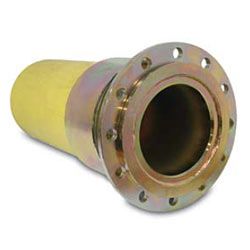
PE Cat fitting. (from WASK-UK website)
TRANSGRIP
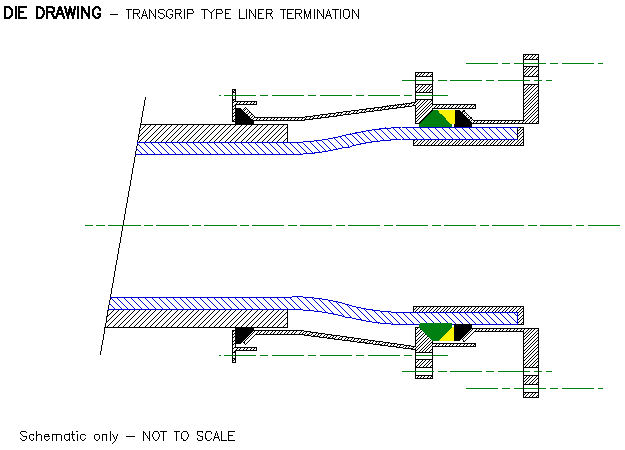
Image Courtesy: Exova Utilities
This diagram shows the Transgrip fitting, which is specifically designed to terminate die drawn liner pipes, providing full end load capability and shear support. Such a fitting should be used to terminate die drawn lining works and may also be used for Rolldown where there is any doubt about the host pipe ID. It is also advisable in folded close-fit lining when there is doubt about the host pipe ID.
The Transgrip fitting also provides a degree of sealing around the host pipe against ingress of ground water, but the effectiveness of this depends largely upon the surface condition and cleanliness of the host pipe end. It does not and cannot provide any angular restraint. Therefore during installation the flange of the ‘piecing up’ pipe must be aligned to the liner termination flange, and not vice versa.
Although there is a short length of liner unsupported in a Transgrip installation, the length is so short as to be well within the gap spanning capability of the PE liner pipe.
NOVAGRIP
.png)
.png)
Images courtesy Nova Siria
This diagram shows an example of the Novagrip fitting, which provides full end load capability and shear support. This has a tolerance of up to 30mm on diameter of both host pipe and PE liner. Such a fitting may be used to terminate die drawn lining works subject to careful measurement of diameters and may also be used for Rolldown where there is any doubt about the host pipe ID. It is also advisable in folded close-fit lining when there is doubt about the host pipe ID.
The Novagrip fitting grippers may be single (PE liner only) or double (PE liner and host pipe) to provide end load restraint. It also provides sealing around both the liner pipe and the host pipe, but the effectiveness of the latter depends largely upon the surface condition and cleanliness of the host pipe end. Novagrip does not and cannot provide any angular restraint. Therefore during installation the flange of the ‘piecing up’ pipe must be aligned to the liner termination flange, and not vice versa.
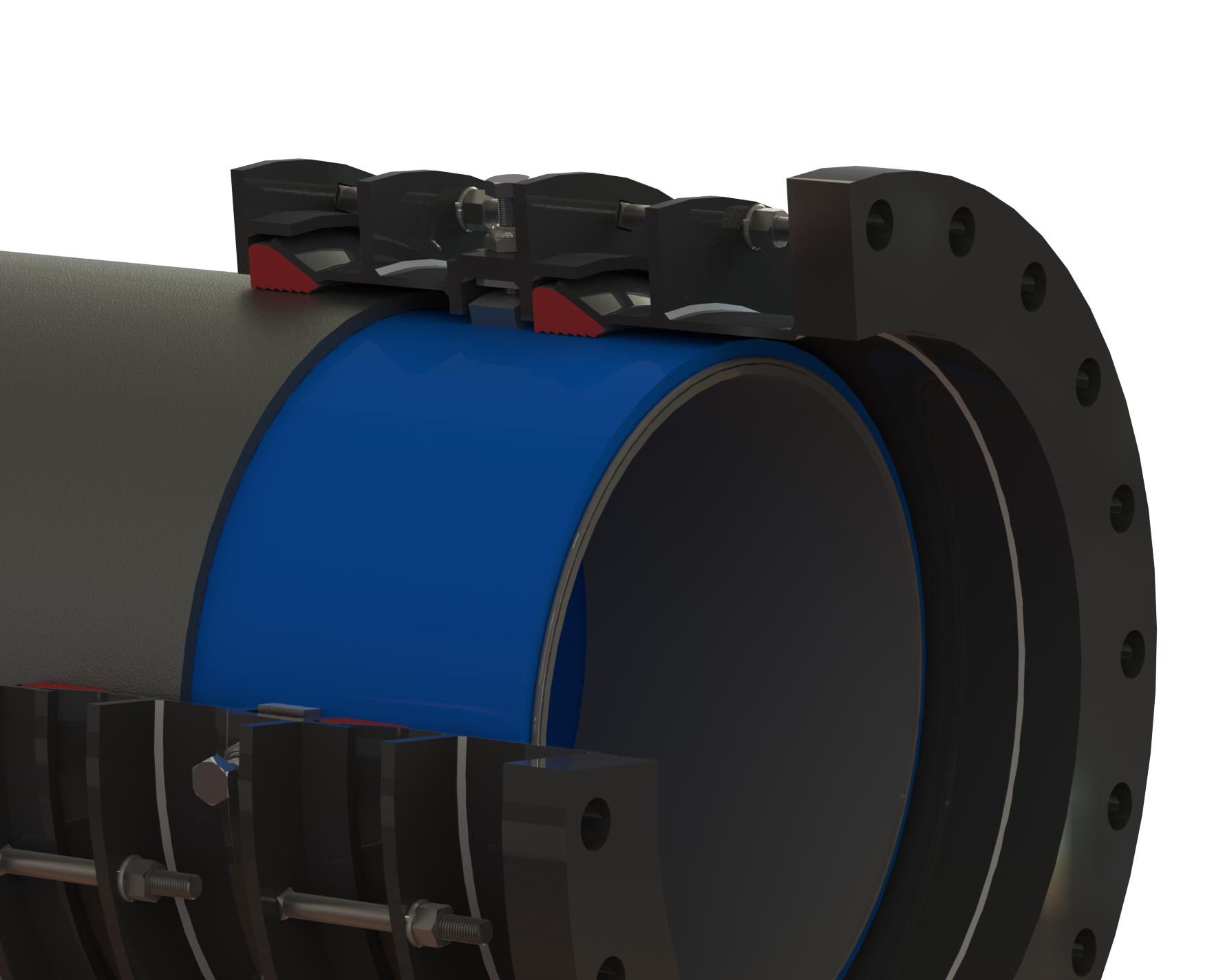
Novagrip (Image courtesy Nova Siria)
AQUAGRIP
Aquagrip is a fully structural liner fitting which is terminated outside the host pipe and is therefore suitable for use with liners that are fully structural.
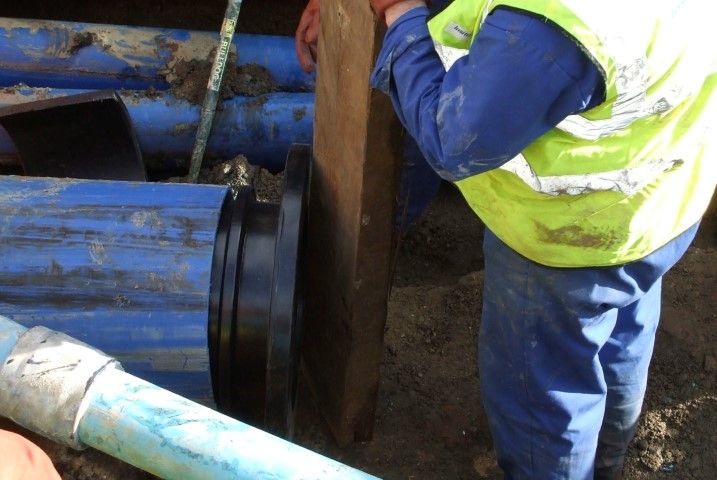
Body of the Aquagrip insert being inserted.
Image courtesy : Exova Utilities
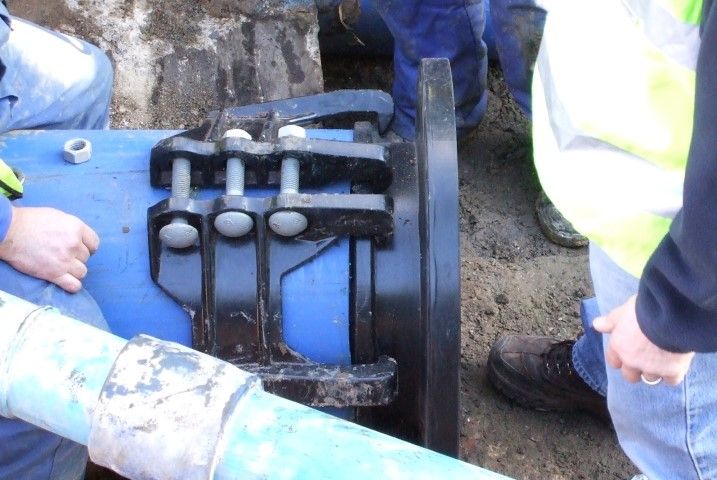
Fitting In Place
Image courtesy : Exova Utilities
LINERGRIP
With the exception of Die Drawing, provided that the host pipe ID is accurately known, a Linergrip can be used, and for this the liner is cut off close to the end of the host pipe, and the hydraulic expander/air bag is applied, As the expansion is carried out partially inside the host pipe, great care must be taken so as not to over-expand the liner and crack the host pipe. It is usually helpful to use a jack to hold the liner pipe fully open while the Linergrip insert is applied. This is a difficult operation, and speed is of the essence once the expander has been withdrawn.
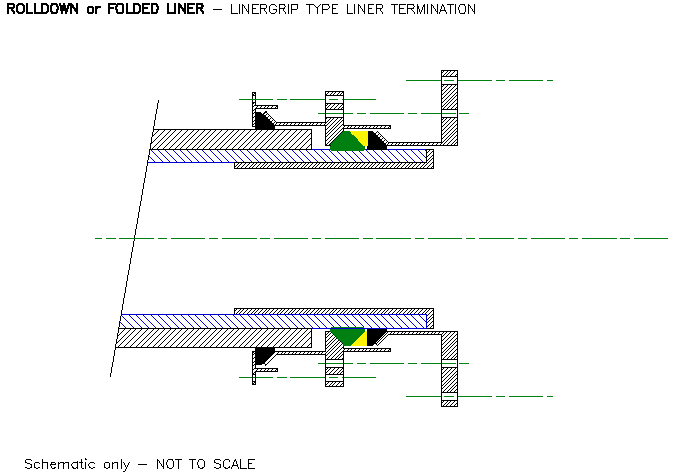
Image courtesy : Exova Utilities
This diagram shows the Linergrip and it can be seen that the ID of the host pipe is critical, as the insert sits inside the liner pipe which in turn sits inside the host pipe. Thus, if the ID of the host pipe is too small, the insert will not fit. The green ring is the ‘necklace’ of gripper pads that make the fitting fully end load capable.
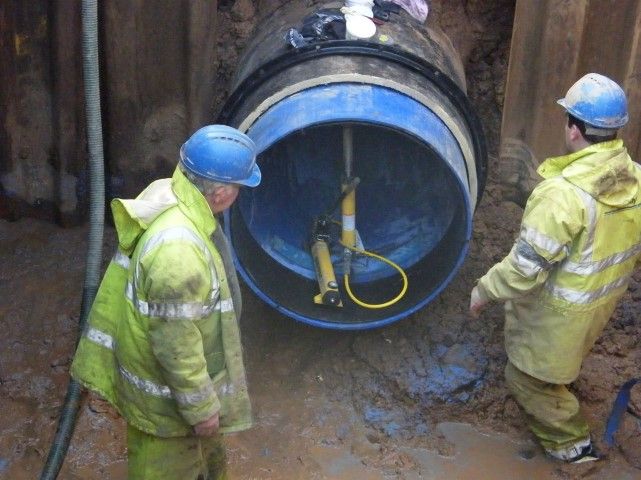
Image courtesy : Exova Utilities
This picture shows the insert (black Rilsan coated) after insertion, with the jack still in position. Once the insert is in place, and the surface of the liner pipe end has been carefully inspected for any damage such as scoring, particularly in the area where the seal will sit, and any such damage has been carefully scraped out, the fitting can be assembled in accordance with the fitting manufacturer’s instructions.
These fittings are not designed to accommodate angular displacement, and must therefore be fitted in line with the host pipe, and under no circumstances may they be ‘kicked’ to better align them with the incoming make up piece.
When installing gaskets or sealing rings it is important that the components containing the seats for these gaskets or rings are supported so that the seats are concentric. This is particularly important on large and therefore heavy fittings, and ensures that all the bolt tension is available for compressing the gasket or ring, and is not dissipated trying to pull the components into alignment.
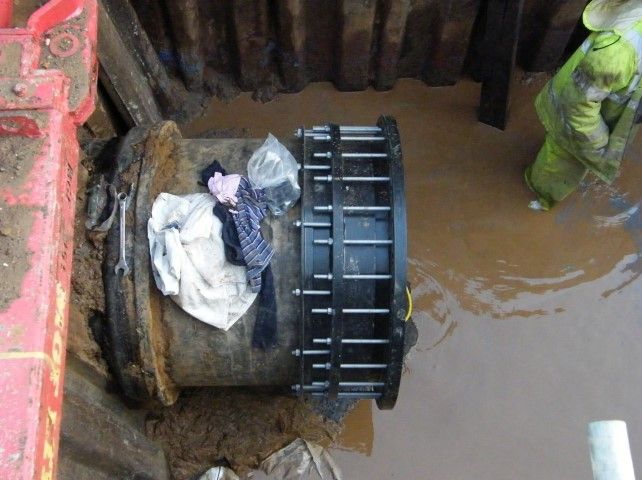
Fitting in place
Image courtesy : Exova Utilities
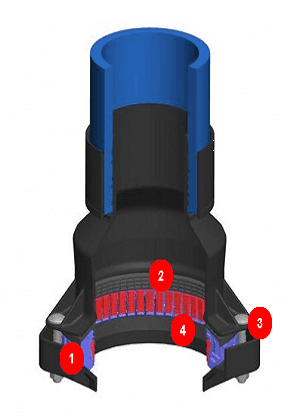
Ultra grip fitting is also available up to DN600. Refer to Viking Johnson website.
Image Courtesy : Viking Johnson
USEFUL LINKS
Slip-lining is perhaps the oldest of all trenchless techniques . It involves the insertion of a new PE100 or PE100-RC liner pipe of standard diameter and SDR into an existing pipe. Under the right conditions, slip lining is also the simplest trenchless technique. A new pipe with an outside dimension smaller than the inside dimension of the host pipe is either pulled or pushed into the host pipe. The ideal host pipes for slip lining are straight with no deformities, no or modest bends, no severe protrusions into the pipe, and only modest offset joints.

